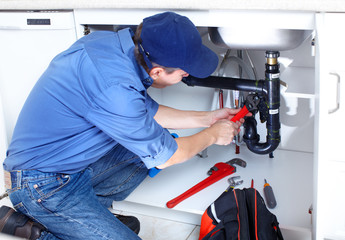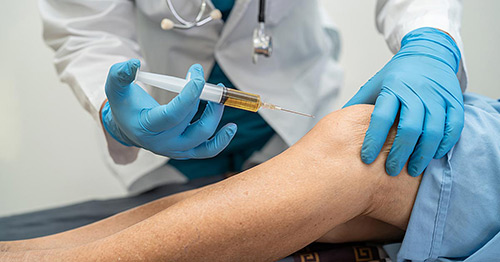Sump pumps require annual maintenance to keep them working properly. During a professional maintenance appointment, plumbers will clean the pump and inspect the discharge line to ensure it is free of obstructions, extends far enough from your home’s foundation, and drains well away from the house.
They will also clear the pump intake screen and float, clean the pit and if necessary, lubricate the bearings. After reinstalling the pump, they will pour water into the basin and check that the float switch operates correctly. Visit https://www.plumbing-express.com/ to learn more.
Plumbers work to install and repair pipes, fixtures, and appliances that carry water and sewage. They often must interpret blueprints and building codes to determine the best way to lay pipe and connect systems. They also use their knowledge of plumbing science to identify issues such as leaks, clogs, or malfunctioning components. These professionals may work on commercial, residential, or industrial sites.
Some plumbers specialize in particular types of jobs, such as laying gas lines for stoves and ovens or repairing water heaters. Other plumbers focus on maintenance tasks such as unclogging toilets and repairing faucets and showerheads. These tasks require them to be able to diagnose problems quickly and effectively. They also need to have the skills necessary to handle tools and equipment such as power saws and drills.
Customer service skills are also important for plumbers to have. They must be able to listen to their customers’ needs and concerns and explain complex issues in simple terms. They also need to be punctual, as arriving at a job site on time is crucial for the success of any project.
In addition to installing and maintaining plumbing systems, plumbers may also be responsible for ensuring that water and sewage are removed efficiently from buildings. This involves inspecting sewer systems and analyzing test results to ensure that they are working correctly. It can also involve adjusting the height of drains and fixtures to accommodate changes in water levels.
Some plumbers are also responsible for maintaining and repairing fire sprinkler systems. This type of work requires them to be familiar with the latest fire safety codes and regulations. They must also be able to troubleshoot and repair issues such as broken sprinkler heads or valves. Plumbers may also be called on to install or replace ductwork for heating and cooling units. This requires them to have a thorough understanding of electrical wiring and the ability to read schematics. They may also be responsible for sizing and installing gas lines for furnaces, boilers, and other equipment. Some may even be responsible for testing the integrity of gas lines.
Clean the Inlet Screen
If your washing machine is taking forever to fill, you might have a clogged inlet screen. This little screen helps to catch mineral deposits and other debris that would otherwise clog the washer’s drain. It also helps to keep your water clean, but it can get clogged with sand and other materials from the hoses. This is especially common in homes with hard water. You can find replacement screens at any appliance parts store. Just be careful not to damage your old one when removing it.
Plumbers install, repair, and maintain pipes, fixtures, and appliances like sinks, toilets, and showers. They use their knowledge of building codes and regulations to ensure plumbing systems are safe and meet standards. Plumbers often collaborate with other professionals, such as architects and construction teams, to ensure plumbing systems are integrated seamlessly into building projects. They also respond to emergency calls to fix issues like burst pipes and clogged drains.
Most plumbers receive their training through an apprenticeship, which combines classroom instruction with paid on-the-job training. After completing their apprenticeship, most states require plumbers to pass an exam and earn a license to work independently. Some plumbers pursue additional certification to improve their skills and advance in the industry.
Problem-solving skills
Plumbers must be able to identify and solve problems quickly and effectively. This involves using a variety of tools and techniques, including specialized equipment such as video cameras and pressure gauges. It also requires critical thinking skills to determine the best solution for each situation. Since plumbers frequently interact with clients, they must be able to communicate clearly and explain complex issues in understandable terms. They must also be able to provide accurate estimates for their services.
Check the Discharge Pipe
It is important that the discharge pipe is working properly. Sometimes, the buried line can freeze or become blocked by debris and you may not be aware of it until you find that your sump pump is working constantly to pump water that just will not exit the discharge pipe.
The discharge line should be directed to a location outside of your home and it should be long enough that you can reach it easily in the event of a problem. It should also be angled downhill to stop backflow from your sump pump and it should be piped independently of equipment drains, pans, or relief valve discharge piping.
You should check the discharge line regularly for any visible blockages. If there are any, you should remove them using a garden tool such as a plumber’s snake. You can also use a plunger to try and clear any blockages that you can see inside of the pipe. If you cannot get the clog to break up, it may be necessary to replace the discharge pipe altogether. Make sure that you turn off the power to the pump before attempting any repairs or inspections. This will help to prevent electrical shocks and accidents.
Clean the Sump Pit
Your sump pump may work well, but if the pit itself is dirty or damaged, it won’t be able to keep your basement dry. To prevent this, you should clean your sump pit and the piping that connects it each year before rainy season. Here’s how:
Before cleaning, shut off your pump and make sure no one is using appliances that drain into it (such as a washing machine). Take the pump out of the pit and place it temporarily in a garbage bag or plastic bin. Next, sweep the entire bottom of the pit for solid debris like twigs, gravel and leaves. Make sure to check around the pit too for debris that could get sucked up into your sump pump when it runs, such as old toys or your son’s baseball bats.
If the pit is too full of sediment to reach the discharge line with a broom, use a long stick or your gloved hands to dig out the bottom of the pit. Make sure to remove all of the sediment and silt that may have collected, as this can lead to clogs later on.
You can also use this opportunity to inspect the pit for damage and repair it if necessary. If you notice cracks or other problems, it’s a good idea to have them repaired by a professional plumber so they don’t worsen over time.
Finally, you can use a garden hose outdoors to spray off the pump and a plastic scraping tool to remove any stuck-on grime. You should then rinse the pump with water inside and out, making sure to remove any detergent residue from the pump as well.
Now that you’ve cleaned your sump pump, test it by pouring water into the pit until the float switch activates. If it doesn’t, you should call a plumber to drain the pump and check for any blockages in the pipe. After draining the sump pump and ensuring it is free of clogs, you can replace it in its pit, reconnect the discharge pipe and ensure all cords are dry before connecting it to power.



